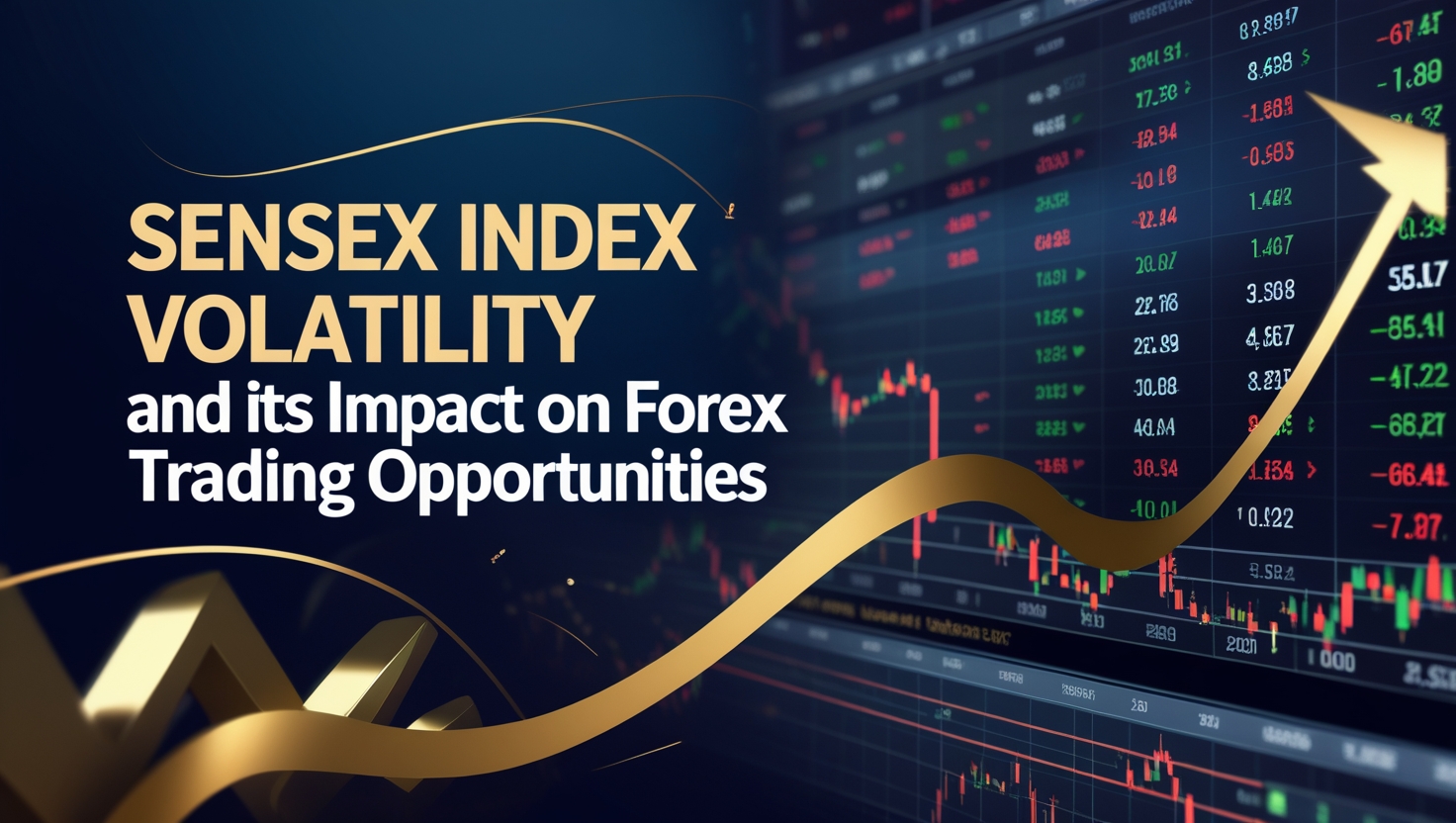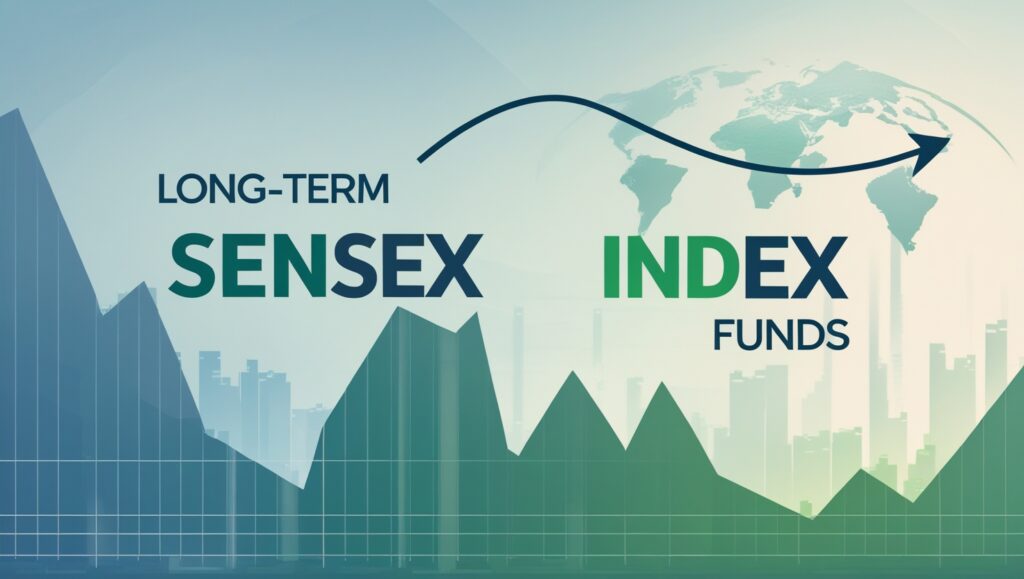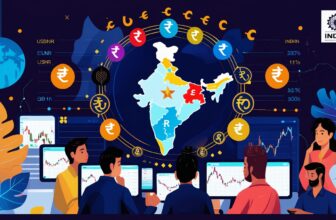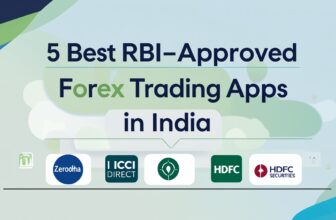
The Sensex index – India’s benchmark stock index – is known for its long-term growth punctuated by bouts of volatility. Understanding how this sensex index today moves over time is crucial, especially for forex traders watching the USD/INR pair. When the Bombay Stock Exchange’s Sensex swings, it can ripple into the currency market. In this beginner-friendly guide, we explore how the long-term ups and downs of the Sensex index influence the Indian rupee’s value against the US dollar. We’ll also touch on sensex index historical data, the role of smallcap and midcap indices, and what it all means for USD/INR forex trading opportunities and investment strategies.
Overview: Impact of Sensex Index
| Category | Key Insights | Historical Performance | USD/INR Impact |
|---|---|---|---|
| Sensex Index Basics | 30 large-cap companies representing India’s economic health. Currently near 80,000 mark (2025), reflecting decades of growth with periodic volatility. | Base year 1979-80 = 100. Positive returns in 83% of years (20 of last 24 years). | Benchmark for foreign investor sentiment affecting rupee demand and supply. |
| Volatility Patterns | Short-term swings of 5-10% are normal. Driven by earnings, geopolitical events, interest rates, and global factors. | Worst year: -52% (2008) Best year: +75% (2009) |
High volatility often signals market uncertainty, typically bearish for INR in short term. |
| Crisis Recovery | Every major correction followed by recovery to new highs. Resilience through multiple crises demonstrates long-term growth trajectory. | 2008: -52% → 2009: +75% 2020: Sharp March fall → +16% year-end 2021: ~23% gains |
Recovery phases often coincide with foreign inflow returns, supporting rupee strength. |
| SmallCap/MidCap | Higher risk, higher reward. Amplify volatility compared to large-cap Sensex. | SmallCap: -73% (2008) but +191% (2003) MidCap: 77% positive years |
Gauge of risk appetite – outperformance signals bullish sentiment for rupee. |
| Foreign Investment Flow | Sensex attracts substantial FPI. Optimism brings inflows (rupee buying), volatility causes outflows (rupee selling). | Strong correlation between FPI flows and market performance during risk-on/risk-off cycles. | Direct impact: Inflows strengthen INR (USD/INR falls), outflows weaken INR (USD/INR rises). |
| Short-term Correlation | Strong positive correlation between Sensex and rupee during crisis periods and risk sentiment shifts. | 2013 taper tantrum, 2018 rupee slide showed synchronized movements in stocks and currency. | Falling Sensex often accompanies rupee weakness in risk-off scenarios. |
| Long-term Divergence | Sensex trends upward (growth-driven) while rupee has structural depreciation tendency (~3-5% annually). | Example: 5-year period with Nifty +42% while rupee fell ~14%. | Stock returns can outpace currency depreciation, attracting long-term foreign investment despite weakening rupee. |
| Investment Strategy | Index funds/ETFs provide diversified Sensex exposure. Buy-and-hold approach historically rewarded. | Decade-long investments (2013-2025): ~20,000 to 80,000+ despite interim crashes. | NRI investors should consider currency hedging for USD return optimization. |
| Trading Opportunities | Use Sensex volatility as USD/INR trading signal. Correlation not causation – consider macro factors too. | August 2025 example: Sensex rally → rupee 87.55 to 87.35 per USD. | Short-term trading opportunities during synchronized moves, but factor in oil prices, trade policy, interest rate differentials. |
Understanding the Sensex Index and Market Volatility
A stylized illustration of the Indian rupee and a fluctuating market graph, symbolizing currency movement alongside stock market volatility.
The Sensex index (BSE Sensex) is a collection of 30 large companies’ stocks, often seen as a barometer of India’s economic health. As of today, the Sensex hovers near historic highs (around the 80,000 mark in 2025), reflecting decades of growth. Volatility, however, is part of its journey – the index experiences periodic surges and corrections. For instance, global events or policy changes can trigger sharp daily moves in the Sensex index today, reminding investors that even a long-term uptrend has bumps along the way.
Market volatility refers to the rapid price fluctuations in assets. In the context of Sensex, volatility means those sudden 5% drops or 10% rallies in short spans. A volatile Sensex can be driven by factors like corporate earnings, geopolitical tensions, or changes in interest rates. It’s not just about local news; international factors (like US Federal Reserve decisions or oil price spikes) also sway Indian markets. Notably, NSE India’s Nifty 50 index (the Sensex’s counterpart on the National Stock Exchange) often mirrors these movements, underlining that broad market sentiment affects all indices. When both the BSE Sensex and NSE Nifty rally or fall together, it often signals a shift in investor confidence that can also influence the currency market.
Beginners should remember that volatility ≠ permanent loss. Short-term swings can be nerve-wracking, but they don’t negate the Sensex’s long-term growth story. In fact, the Sensex has proven resilient through multiple crises, rebounding from every downturn. As one financial analyst quipped, “Volatility is temporary, but long-term growth is permanent.” In practical terms, that means while daily moves can be unpredictable, the overall trajectory of the Sensex index has historically been upward. This resilience is why many investors see volatility not as a reason to panic, but as an opportunity to buy quality investments at a discount.
Sensex Index Historical Data: Long-Term Growth Amid Swings
Sensex Index Historical Data: Long-Term Growth Amid Swings
Since its inception in 1986 (base year 1979-80 = 100), the Sensex has multiplied in value many times over. It has delivered positive annual returns in 20 of the last 24 years, showcasing an impressive hit rate. Even when severe crashes occurred – like the 2008 global financial crisis when Sensex plunged over 52% – the index roared back with a 75% gain in 2009.
History shows that every deep Sensex correction has been followed by a recovery, often reaching new highs. This pattern underscores a key takeaway for long-term investors: patience tends to be rewarded.
Long-Term Trends vs. Short-Term Volatility
Over decades, the Sensex’s direction has been broadly upward, fueled by India’s economic growth and corporate earnings expansion. Short-term, however, volatility can be significant.
Historical Crisis & Recovery Examples
Dot-com Bust (2000-2001)
CrisisAfter peaking during the tech boom, Sensex tumbled in the early 2000s, but resumed its climb as the economy adjusted.
Global Financial Crisis (2008-2009)
Major CrisisSensex lost more than half its value in 2008, then rebounded with one of its best-ever years in 2009.
COVID-19 Crash (2020-2021)
Quick RecoveryA swift fall in March 2020 was followed by a strong rally; by 2021 the index was hitting new highs.
Short-term losses were temporary
Only 4 out of 24 years between 2001 and 2024 saw the index end lower, while the long-term growth trend remained intact.
83% Success Rate
A compelling statistic showing that despite volatility, long-term investors have generally come out ahead.
Upward Momentum Prevails
The Sensex’s upward momentum has outweighed interim dips, rewarding those who stay invested through cycles.
“Courage taught me no matter how bad a crisis gets… any sound investment will eventually pay off.”
– Carlos Slim Helú, Veteran Investor
This perspective reminds beginners that enduring short-term pain can lead to long-term gain.
Sensex Smallcap and Midcap Indices: Higher Risk, Higher Reward
While the Sensex covers large-cap blue-chip stocks, the sensex smallcap index and sensex midcap index (more formally the BSE SmallCap and BSE MidCap indices) track smaller companies. These indices often experience even greater volatility. Why? Smaller firms typically face bigger swings in investor sentiment – during bull markets, they can skyrocket, and in bear markets, they can plunge dramatically.
To illustrate, let’s compare historical performance of the large-cap vs. smaller-cap indices:
- Sensex (Large-Cap): Positive in ~83% of years, with the worst year –52% (2008) and best year +75% (2009).
- BSE MidCap Index: Positive ~77% of years (17 of 22 years since 2003). Notably saw a –67% crash in 2008 and a +167% surge in 2003. Larger swings than Sensex, reflecting higher sensitivity.
- BSE SmallCap Index: Positive ~73% of years. Known for extreme moves – a massive –73% drop in 2008, but also a +126% jump in 2009 (and even +191% in 2003!). It’s the most volatile segment, yet it delivered the highest one-year gains in strong market years.
In simple terms, small-caps and mid-caps amplify volatility. They fall harder in bad times and rise higher in good times. This “higher risk, higher reward” nature means forex traders and investors watch these indices as a gauge of market risk appetite. If smallcaps are surging ahead of the Sensex, it signals bullish sentiment; if they’re crashing worse than Sensex, it could indicate panic.
For example, in a market rally, the Sensex might climb 20% in a year, whereas the smallcap index might climb 35%. Conversely, in a downturn, if Sensex dips 10%, smallcaps might dip 20%. This is evident in data: the BSE SmallCap index is the most volatile but offers the highest rewards for patient investors. Knowing this, a beginner should be cautious: diversification is important. One can participate in the potential of small/midcap growth but should be prepared for bumpier rides compared to the relatively steadier Sensex.
How Sensex Index Volatility Influences USD/INR Forex Trading
Stock market volatility and currency movements in India are closely intertwined, especially in the short to medium term. A volatile Sensex index often has a direct impact on the USD/INR exchange rate. Here’s how and why:
- Foreign Portfolio Investment (FPI) Flows: The Sensex attracts substantial foreign investment. When global investors are optimistic about Indian stocks, they pour money in – buying rupees to invest, which can strengthen the INR (pushing USD/INR down). But if the Sensex becomes volatile or trends downward (say due to economic concerns), foreign investors may pull funds out, selling rupees for dollars, which weakens the INR (USD/INR rises). “Rupee value is a key determinant of FPI flows and these FPI flows tend to become negative when the rupee is weakening or is expected to weaken,” explains one market analysis. In essence, a falling rupee often accompanies foreign investors exiting stocks, which can drag the Sensex lower – a feedback loop of pressure.
- Risk Sentiment Correlation: In times of crisis or uncertainty, both the stock market and the currency can fall simultaneously. For example, during the 2013 “taper tantrum” or the 2018 rupee slide, Indian equities dropped in tandem with a weakening rupee. Short-term data confirm this positive correlation: when the rupee fell sharply in late 2018, the Nifty/Sensex also saw negative returns, and when the rupee bounced, stocks bounced too. One study visualized this “rupee-dollar and Sensex tango” – a close correlation between INR’s value and the Sensex, driven by the dependence on foreign fund flows. For forex traders, this means watching the Sensex can provide clues about rupee direction in risk-off or risk-on scenarios.
- Long-Term Divergence: Interestingly, over the long term, the relationship is less straightforward. The Indian rupee has a structural tendency to depreciate gradually (due to higher inflation in India than the US, and other trade factors), whereas the Sensex tends to appreciate due to growth. Over a five-year horizon, it’s possible to see the Sensex up significantly while the rupee is weaker. Case in point: in one 5-year period, the Nifty (akin to Sensex) rose 42% while the rupee fell ~14%. This divergence happens because stock returns reflect companies’ growth and earnings (often outpacing inflation), whereas currency value reflects macroeconomic factors. Global investors accept a bit of rupee depreciation as long as company fundamentals deliver strong returns. For forex traders, this means you shouldn’t assume a booming Sensex will always strengthen INR long-term – other forces like interest rates and trade balance play a big role.
- Policy and Intervention: The Reserve Bank of India (RBI) monitors both currency and financial market stability. If excessive volatility in Sensex spills into forex (or vice versa), RBI may step in (e.g., adjusting rates or directly intervening in currency markets) to stabilize the rupee. Experts believe that excessive volatility in the rupee may prompt RBI to intervene to curb wild swings. For example, in mid-2025, as the rupee neared a historic 87 per dollar, analysts noted the central bank’s watchful eye on volatility. Such interventions can moderate the currency moves even if stocks are swinging, creating a somewhat dampened effect on USD/INR.
Forex Trading Opportunities: Traders in the USD/INR pair often use Sensex volatility as a signal. If the Sensex drops on global risk aversion, a forex trader might anticipate INR weakness and position for USD/INR to rise. Conversely, a sustained Sensex rally fueled by foreign inflows could mean a strengthening rupee, offering a chance to go long on INR (expecting USD/INR to fall). For instance, in August 2025 a rally in local equities (after tax cut announcements) coincided with the rupee rising from 87.55 to 87.35 per USD – a modest appreciation, “rising in tandem with local shares”. Traders watching that Sensex jump could foresee short-term rupee support.
It’s important to note that correlation is not causation and not every market move aligns perfectly. Many other factors influence USD/INR: interest rate differentials, oil prices, global dollar strength, etc. In fact, one senior analyst pointed out that “The rupee’s near-term outlook remains tethered to how U.S.–India trade relations shape up,” emphasizing that trade policy news can sway the currency beyond just stock moves. And as HDFC Securities’ analyst Dilip Parmar observed in mid-2025, “The Rupee is projected to depreciate, driven by an increased demand for the safe-haven US Dollar. Elevated crude oil prices… are also expected to negatively impact the Rupee’s valuation,” tying rupee weakness to global fear factors like oil and safe-haven flows. Such macro drivers can overpower short-term stock optimism.
Key takeaway for traders: In the short run, keep an eye on Sensex and broad market sentiment as one indicator for USD/INR direction. A highly volatile Sensex often means uncertainty – usually bearish for INR. In the long run, remember that INR has its own trend (gradual depreciation historically) and the Sensex has its own growth path. Successful forex trading on USD/INR will factor in both immediate market mood (often reflected by equity volatility) and the bigger economic picture.
Long-Term Investment Strategies: Sensex Index Funds and Forex Implications
Volatility can be disorienting, but from an investment standpoint, it also underscores the value of a long-term approach. If you’re looking for the answer to how to invest in the Sensex index itself, one popular route is through a sensex index fund or ETF. These index funds passively track the Sensex’s performance, giving you exposure to all 30 companies in one go. As Vanguard founder John Bogle famously advised, “Don’t look for the needle in the haystack. Just buy the haystack!”. In other words, instead of trying to pick the one winning stock (needle), buy the whole market (haystack) via an index fund. For beginners, this is a straightforward way to invest in the India growth story without worrying about individual stock picks.

How to invest in the Sensex index: There are a few methods:
- Index Mutual Funds: Many Indian fund houses offer Sensex index mutual funds (e.g., ICICI Prudential Sensex Index Fund, HDFC Sensex Index Fund). You can invest in these funds with relatively low amounts and low fees.
- Exchange-Traded Funds (ETFs): For example, the SBI ETF Sensex or Nippon India ETF Sensex. These trade on NSE India and BSE like any stock. You buy units of the ETF, and it mirrors the Sensex’s performance.
- Index Futures/Options: For more advanced traders, both BSE and NSE offer derivatives on indices (though this is not an “investment” but a trading strategy, and beginners should be cautious).
When investing, think long-term. The Sensex index fund route is ideal for a buy-and-hold strategy, aiming to ride out volatility and benefit from India’s economic growth. Historical data supports this strategy: had you invested in a Sensex index fund a decade ago and held on, you would have seen substantial gains as the index climbed from roughly 20,000 in 2013 to ~80,000+ by 2025, despite interim crashes.
Forex implications for investors: If you are an overseas investor or otherwise concerned with USD returns, remember that your rupee-denominated investment’s value in USD will also depend on the exchange rate. For example, an NRI investing in a Sensex fund would have seen strong rupee returns, but if the INR depreciated over that period, the gains in USD terms would be slightly lower. Long-term investors often hedge currency risk or simply accept that moderate INR depreciation (historically ~3-5% per year on average) might chip away at some of their local returns. The flip side is, if you believe in India’s fundamentals, a stable or strengthening INR could boost your foreign-currency returns.
From a financial planning perspective, mixing equity investing with an eye on currency trends is part of a holistic strategy. You might invest in the Sensex for growth and simultaneously use forex instruments to hedge or capitalize on INR movements. For instance, if the Sensex midcap index and smallcap index are booming (high optimism) but you suspect the rupee might weaken due to a widening trade deficit, you could hedge by holding some USD assets. This way, you’re protected if USD/INR rises even as your equity investments grow.
In any case, maintain a balanced, E-E-A-T (Experience, Expertise, Authoritativeness, Trustworthiness) approach: do your research, perhaps consult a financial advisor, and avoid emotional decisions. As the saying goes, “Investing should be more like watching paint dry or watching grass grow. If you want excitement, take $800 and go to Las Vegas.” In other words, patience and discipline trump thrill-seeking in investment. The Sensex’s long-term story is one of wealth creation for patient investors, and forex trends are one part of that story.
Conclusion: Navigating Sensex Volatility and USD/INR Opportunities
In summary, the Sensex index represents the promise of India’s growth – it has delivered strong long-term returns, albeit with intermittent volatility. For a forex trader eyeing USD/INR, Sensex volatility is a vital signal of market mood: a soaring Sensex amid robust foreign inflows can presage rupee strength, whereas a plunging Sensex on global fear often accompanies rupee weakness. We’ve seen that short-term, stocks and currency often dance together, while over longer periods they can chart different courses. This duality creates both challenges and opportunities.
For beginners, the key lessons are clear. Long-term investment perspective: Don’t be scared off by volatility. Whether through a sensex index fund or other avenues, investing patiently in the index can pay off, as history shows far more positive years than negative. Forex trading implications: Use the knowledge of market interconnections to inform (but not solely drive) your trading decisions. Keep an eye on macro factors – a budget announcement, an interest rate hike, or a geopolitical shock can move the Sensex and rupee together in the blink of an eye.
Always approach YMYL (Your Money Your Life) topics like investing and forex with due diligence. Verify information from reliable sources, and consider expert opinions but make decisions suited to your risk tolerance. As renowned investor Warren Buffett would advise, be fearful when others are greedy and greedy when others are fearful – meaning sometimes the best opportunities arise when volatility is high and markets are in panic. By staying informed and level-headed, you can turn the understanding of Sensex volatility and currency dynamics into an asset for your financial journey.
In essence, the interplay of the Sensex index and USD/INR is a fascinating facet of financial markets. Embrace the human-like rhythm of these markets – the ebbs and flows, the surprising contradictions (like a rising market and a falling currency), and the recoveries after each storm. With a structured strategy and a long-term view, you can navigate this landscape with confidence. Now, let’s address some frequently asked questions to solidify these concepts.
FAQ
What is the Sensex index and why is it important?
The Sensex (S&P BSE Sensex) is the benchmark stock index of the Bombay Stock Exchange in India, comprising 30 of the largest and most actively traded companies. It’s important because it reflects the overall performance of India’s equity market. When people talk about “the market” in India, they often refer to the Sensex. A rising Sensex usually signals economic growth and investor confidence, whereas a falling Sensex may indicate economic or corporate earnings concerns. It’s similar to the Nifty 50 index on NSE (NSE India’s exchange); both are key barometers for the Indian economy.
How does Sensex volatility affect the USD/INR exchange rate?
Sensex volatility can influence the USD/INR rate through investor behavior and sentiment. In times of high volatility or market drops, foreign investors often pull money out of Indian stocks (Sensex), which means selling rupees and buying dollars – putting downward pressure on the INR (the rupee weakens, USD/INR rises). Conversely, when the Sensex is rallying steadily, especially if driven by foreign inflows, demand for rupees increases (as investors convert dollars to rupees to invest), which can strengthen the INR (USD/INR falls). However, this is a general trend, not a strict rule – other factors like interest rates, trade deficits, and global risk sentiment also play major roles in the currency’s value.
How can I invest in the Sensex index?
You cannot buy the index directly, but you can invest in products that mirror the Sensex’s performance. The most common ways are: Index Funds: Mutual funds that track the Sensex. When you invest in a Sensex index fund, your money is spread across all 30 Sensex companies according to their index weight. It’s a passive investment with typically low fees. Exchange-Traded Funds (ETFs): These are like index funds but trade on stock exchanges like a stock. For example, there are Sensex ETFs you can buy through your brokerage account. They aim to replicate the Sensex’s returns. Index Futures: If you are more advanced, you could trade Sensex futures or options, but this is generally not for beginners and involves significant risk. For a beginner, investing via a Sensex index mutual fund or ETF is the simplest approach. It provides instant diversification across top Indian companies and is a low-cost, long-term investment strategy.
Should long-term investors worry about Sensex volatility?
Long-term investors should be aware of volatility but not overly worry about it. Volatility is normal in equity markets – prices will fluctuate day to day, even month to month. What matters for long-term investors is the trend over years and decades. Historically, the Sensex has trended upward strongly despite many short-term corrections. If you have a long horizon (say 5, 10, 20 years), short-term volatility shouldn’t derail your plan. In fact, some long-term investors use volatility to their advantage – for example, buying more shares when prices dip (getting stocks “on sale”). The key is to invest in quality (like a diversified index or fundamentally strong stocks), stay patient, and not panic-sell during market drops. Over the long run, the data shows that the market’s growth has rewarded those who stayed invested through volatile periods.

















